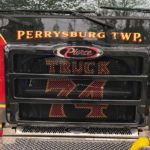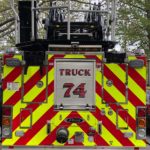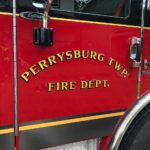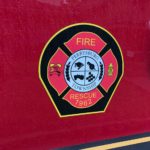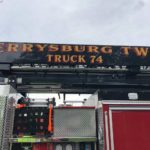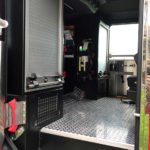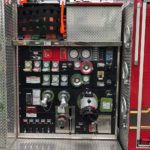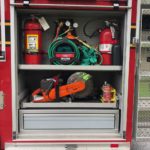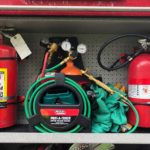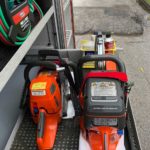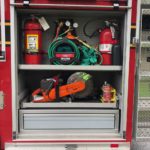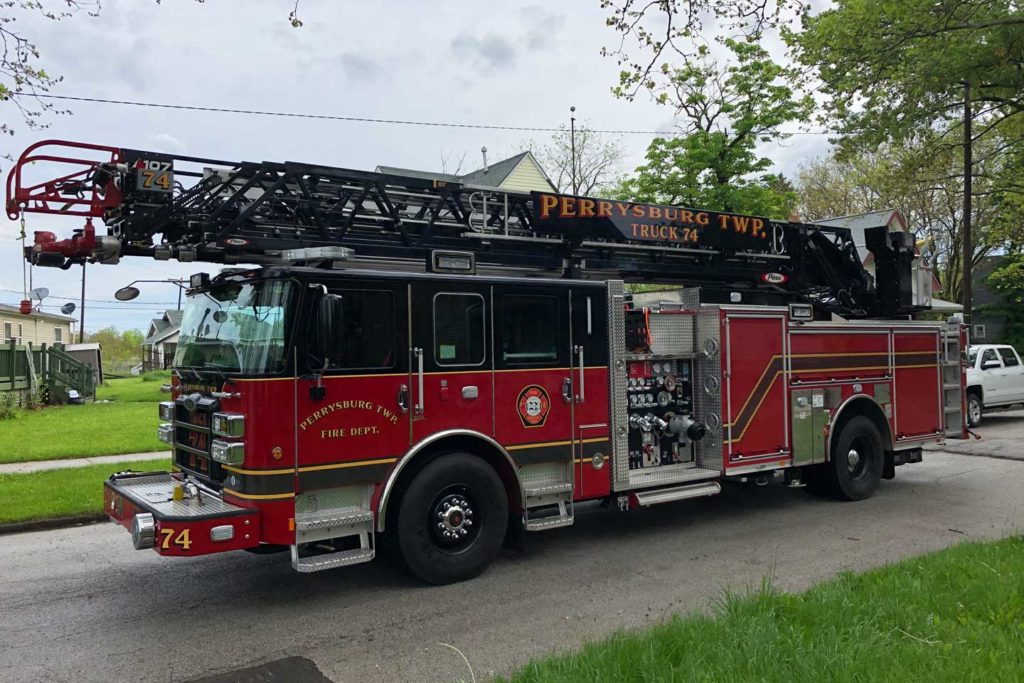
The township of Perrysburg, Ohio, is one of 19 townships in Wood County. It sits on the south side of the Maumee River and is located 10 miles south of the City of Toledo. The town is named after Commodore Oliver Hazard Perry, a Naval Commander during the War of 1812. The town was founded in 1816 and was a center for ship building and commerce because of its proximity to Lake Erie. The town is 40 square miles that include residential, industrial, and rural areas. The town is protected by the Perrysburg Township (OH) Fire & EMS Department, which started responding to calls in 1962 and is staffed with 18 full-time and 25 part-time Firefighters. The department runs an average of 1,500 runs per year, with about 80 percent EMS calls, while the other 20 percent are fire and emergencies calls. The department’s water source infrastructure is 50 percent hydrants, and it must rely on rural water operations for the other half of its response area. The department has three engines, one ladder, one heavy and one light duty rescue, one tanker-pumper, a grass rig, two boats, three ambulances, a hazmat unit, two trailers—a mass casualty and fire safety—and three administrative vehicles. The department also maintains its original 1961 commercial cab Ford pumper.
The department recently took delivery of a 107-foot Pierce Ascendant heavy-duty steel aerial ladder. It has an Enforcer chassis with a tilt cab and an aluminum body with roll-up compartment doors and side roll and frontal impact protection. It is painted black over red with a black aerial ladder. On the ladder’s bed section it has a 16-foot roof ladder mounted to it on the chauffeur side, and on the officer’s side there is a Stokes basket and backboard. There is a three-reflective-stripe pattern (large black and two smaller yellow) running along the underside of the cab and then transitioning diagonally upward on the first roll-up compartment door and across the upper section of the rig to the rear. The extended steel front bumper has a center hose tray for 1¾-inch hose storage and a tray on the right side for holding a 25-foot section of 5-inch hose. The rig is powered by a Cummins L9 45-0hp engine with TAK-4 independent front suspension. It has a Waterous midship 2,000-gpm pump with a Husky 3 Foam System, a 480-gallon booster tank, and a 20-gallon foam tank. There is a Smart Power 6.2-kW hydraulic generator with a Command Zone electrical system. For additional safety measures, it features Pierce side-view and rear backup cameras while also having a Tal65 traffic directing LED light mounted in a protective aluminum box on the rear of the apparatus, which also has the NFPA safety chevrons. To assist the chauffeur, the truck is equipped with Retrac heated and remote control mirrors with convex sections. For responding needs, there is a Federal Q2B siren with two Grover air horns recessed into the bumper.
For water operations, the rig is equipped a 1,500-gpm high flow waterway, with a 2½-inch auxiliary outlet at the tip. There are remote controls for the monitor nozzle at the pump panel and remote controls for the aerial at the tip in addition to those on the pedestal. The aerial also has Lyfe Pulley Rescue System at the tip with a lifting eye rope rescue attachment. The hose complement on the apparatus has two crosslay beds holding 200 feet of 1¾-inch and one for 200 feet of 2½-inch. The rear hosebeds are split between the turntable and hold 500 feet of 5-inch hose on each side for a total of 1,000 feet. In addition to its firefighting equipment, the interior of the crew cab has two dedicated EMS equipment compartments. The rear of the rig has two ladder storage compartments, and the left side carries a 24- and 28-foot two-section extension ladders. The right side carries a 35-foot three section extension ladder, a 16-foot roof ladder, and a 12-foot suitcase ladder. It also has a 5-inch intake on the rear of the rig.
The apparatus boasts an array of electrical components and light features. On the front of the cab, there is a Whelen Pioneer visor light, while the cab’s roof has two Freedom IV LED light bars. The rear has two Whelen M9 LED scene lights and two L31and M6 warning lights. On each side of the apparatus, there is Whelen Pioneer PFS2 LED recessed scene lighting. The aerial ladder is lighted by TECNIQ rung lighting for safer climbing and descending operations during periods of limited visibility. On each side of the crew cab, there are FRC Max Vision LED water level lights so firefighters can visibly keep an eye on the tank’s water level. For power needs further from the rig, a Hannay cord reel holding 200 feet of 12/3 electrical cord is mounted above the pump panel and crosslays. When the apparatus is parked in quarters, there is a shoreline power connect with a Kussmaul super auto-eject.
The left rear compartment of Ladder 74 is set up to assist in forcible entry and saw operations. The compartment is broken up into three storage areas. The top shelf is a permanently attached shelf that has a dry chemical and carbon dioxide extinguisher mounted on each side. The middle of the shelf has a mini oxygen and acetylene pack with safety glass and gloves stored with it. The middle shelf pulls out and is home to a chainsaw set up for roof operations and a forcible entry saw with a diamond carbide blade on it. The lower storage area in the compartment is a pull-out draw which stores a variety of spare saw blades, a tool pouch with numerous small hand tools in it, and a plastic case that holds an assortment of ratchets, sockets, and wrenches.
Not only does this rig look impressive when you look at it, but it also is laid out by the firefighters, so it’s a workable piece of apparatus to the members who operate it.
MICHAEL N. CIAMPO is a 33-year veteran of the fire service and a lieutenant in the Fire Department of New York. Previously, he served with the District of Columbia Fire Department. He has a bachelor’s degree in fire science from John Jay College of Criminal Justice in New York City. He is the lead instructor for the FDIC Truck Essentials H.O.T. program. He wrote the Ladders and Ventilation chapters for Fire Engineering‘s Handbook for Firefighter I and II (Fire Engineering, 2009) and the Bread and Butter Portable Ladders DVD and is featured in “Training Minutes” truck company videos on www.FireEngineering.com. He also writes the back page column ON FIRE in Fire Engineering.


